#mark scherz
Text
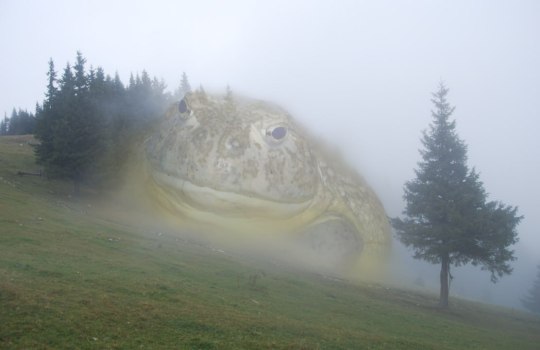
fog
25 notes
·
View notes
Text
Newest contender for the world's smallest vertebrate. The Brazilian flea toad (actually a frog) was first described in 2011 but since them more have been examined. The male is slightly smaller than the female, averaging just over 7mm.
"At such small scales, frogs develop strange anatomical quirks, such as losing toes or having such underdeveloped ears that they can’t hear their own suitors’ songs. Some species can hardly jump because their balance organs are so wee."
1 note
·
View note
Text
tumblr leadership: we need INFLUENCERS we need CELEBRITIES we need this site to become MARKETABLE
tumblr users: there's a frog scientist on here and we worship him
8K notes
·
View notes
Text
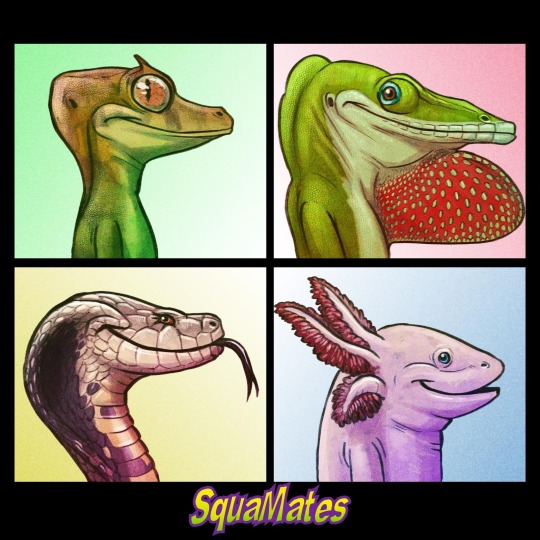
Episode 22 of the SquaMates podcast, featuring yours truly and three other reptile and amphibian nerds, is streaming now over on YouTube!!
youtube
You can also get it on Apple Podcasts and other apps! We hope you like it!
#herpetology#biology#podcast#reptiles#nerds#academia#art#Gabriel Ugueto#Ethan Kocak#Hiral Naik#Mark D. Scherz#SquaMates#SquaMates Podcast#Youtube
99 notes
·
View notes
Note
what if i didn't want to see frog butt cheeks
listen if you come into my house where we are celebrating the tiny ass cheeks of the world’s most underappreciated amphibians and you overturn our table of snacks and proclaim your hatred for very very very small booty cheeks then we are obligated to beat you to insensibility. with frog buttcheeks.
#lindsey shut up#tumblr god and renowned herpetologist Mark Scherz obliterate this fool#an ask? wtf#Anonymous#HOW can you hate the froggy ass. do you also hate the wondrous night sky and the roar of the ocean.#appreciate nature or die by my hand#(this is all a joke. this is ALL A JOKE.)#(but frog butts????? you don’t like the frog butts?!?!! look at them. they’re so small and funny.)
13 notes
·
View notes
Note
I read somewhere that rain frogs are mostly muscle, is this true? Extremely curious about their anatomy so I'm wondering if you have any insight as to why/how they are so round!
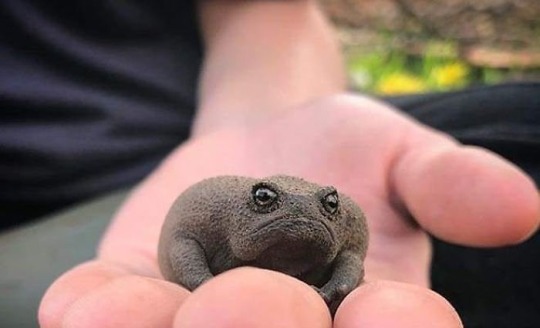
Black Rain Frog (Breviceps fuscus), family Brevicipitidae, endemic to South Africa
photograph by Brittany Raine | Nature ~ Adventure ~ Photography | (@brittle_sees)
~~~~~~~~~~~~~~~~~~~~~~~~~~~~~~~~~~~~~~~~~~~~~~~
Yes, you are correct, Rain Frogs are actually not altogether that fat... they're just shaped like that. They actually do have quite a lot of muscle mass for their size.
Having a round, compact body seems to allow for better, more efficient, burrowing.
You see, that "fat", round body again and again in different groups of burrowing frogs, like many of the Microhylidae and the Spadefoots. This group of frogs does seem to be the ultimate in roundness though!
For a more technical explanation of how they're structured, check out Mark Scherz's recent post about the subject...
The Travelling Taxonomist - Why are rain frogs so round? What's /inside/ of... (tumblr.com)
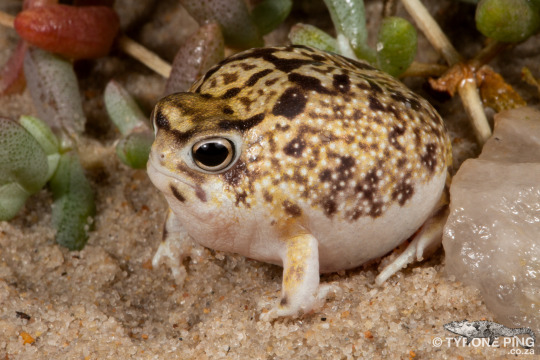
Desert Rain Frog (Breviceps macrops), family Brevicipitidae, South Africa
A few herpetologists are now including rain frogs (and their close relatives) in the family Hemisotidae, as the subfamily Brevicipitinae. I am not, though the 2 families are now considered to be very closely related.
photograph by Tyrone Ping
Tyrone Ping - Exploring Southern African Herpetofauna
965 notes
·
View notes
Text
Namib Sand Geckos: these nocturnal geckos have biofluorescent markings that emit a bright, neon-green glow when exposed to the moonlight

This species (Pachydactylus rangei) is found only in the Namib Desert, which stretches across Namibia, Angola, and South Africa; the geckos typically inhabit the arid, coastal region known as the Skeleton Coast.
In order to escape from the blistering heat of the desert, they use their webbed feet to burrow down into the sand during the day, and then emerge only at night, when the temperature has finally dropped. The webbing on their feet also enables them to run more easily across the dunes.
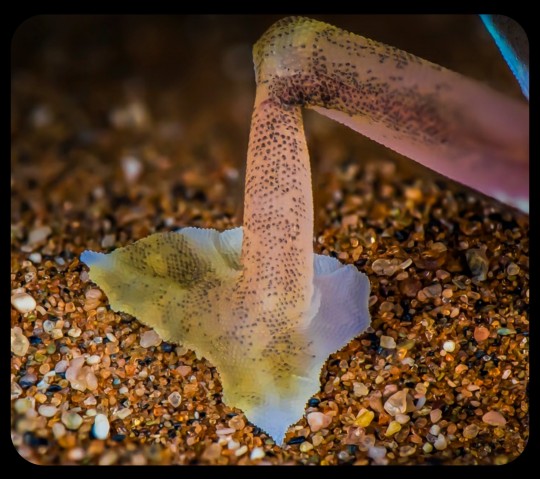
Namib sand geckos are covered in translucent scales, but they also have a strangely colorful appearance, as the colors/shades of their circulatory system, spinal column, internal organs, and optical membranes remain partially visible through the skin, producing various shades of pink, dark blue, purple, magenta, orange, and yellow.
They also have several distinctive markings running along their lower flank and encircling their eyes; these markings are known to fluoresce when exposed to UV light (including moonlight), emitting a bright, neon-green glow.

Some researchers have theorized that the biofluorescent markings may act as a signal to other geckos, allowing them to locate one another in the vast, desolate expanse of the desert, as this paper explains:
The fluorescent areas of P. rangei are concentrated around the eyes and along the lower flanks. This positioning is practically invisible to predators with a higher perspective (e.g. birds and jackals), but highly conspicuous from a gecko’s perspective. As P. rangei is sociable but generally solitary, and occurs at low population densities, such a signal might serve to locate conspecifics over greater distances ...
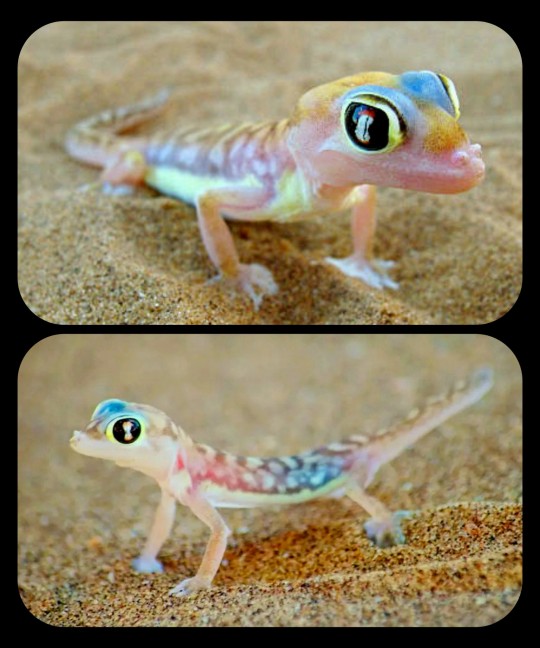
Encounters in P. rangei might serve purposes beyond mating opportunities: as the Namib desert has extremely low precipitation, fog is a key water source for its flora and fauna. Fog condenses on the bodies of the geckos, and they lick it from their faces. In husbandry, we have observed individuals licking water from conspecifics, taking advantage of a much greater available surface area.
Additionally, after short periods of isolation, the geckos run to meet each other. The combination of vital hydration with socialisation might reinforce signals that enable such meetings, and the cost of visibility to predators with higher vantage points, might constrain the signals to regions best visible from eye-level and below.
The Namib sand gecko is the only terrestrial vertebrate that is known to use an iridophore-based form of biofluorescence (you can find a more detailed explanation of that mechanism in the article mentioned above). The fluorescent dermal markings are also unique to this species.
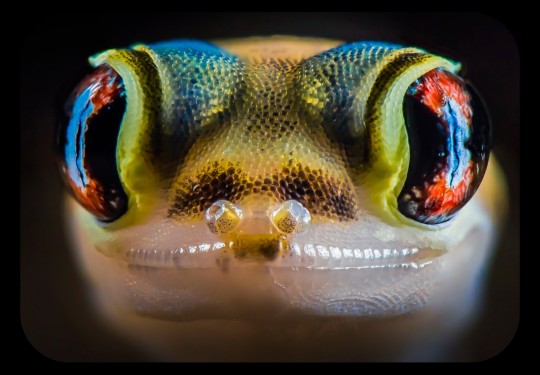
Sources & More Info:
Scientific Reports: Neon-green fluorescence in the desert gecko Pachydactylus rangei caused by iridophores
Animal Diversity Web: Pachydactylus rangei
Dr. Mark D. Scherz's Blog: A Neon-Green Glowing Gecko!
Australian Geographic: Skeleton Coast - Namibia's strange desert dwellers
#herpetology#reptiles#gecko#Pachydactylus rangei#namib sand gecko#palmatogecko#namib desert#namibia#biofluorescence#animals that glow#lizards#cute animals#biology#nature#africa#squamata#web-footed gecko#cool animals#geckos#South Africa#Angola#Skeleton Coast#wildlife#not an arthropod#but still pretty cool
188 notes
·
View notes
Text
The World’s Smallest Vertebrate Is a Tiny Brazilian Frog, Study Finds
Adult male Brazilian flea toads are just over 7 millimeters long on average, and females measure about 8.15 millimeters

A tiny frog endemic to the state of Bahia on Brazil’s Atlantic coast may have just earned the title of the smallest vertebrate in the world.
The Brazilian flea toad, or Brachycephalus pulex, was first discovered in 2011—and despite its name, it is technically a frog, not a toad. Researchers immediately suspected the creature could break the record for the tiniest frog—and vertebrate—on Earth, but it wasn’t until a new study that scientists systematically measured the lengths of the species’ males and females.
The male frogs, which are smaller, measured 7.10 millimeters long on average, the team reported this month in the journal Zoologica Scripta. An earlier study of the frog Paedophryne amauensis, the previous record holder, found that its males averaged 7.70 millimeters in length.
“It’s absolutely clear,” Mark Scherz, an evolutionary biologist at the Natural History Museum of Denmark who did not contribute to the findings, tells New Scientist’s Jake Buehler. “These really are potentially the smallest extant frogs in the world, which is astonishing.”
Continue reading.
58 notes
·
View notes
Note
🐸🌼
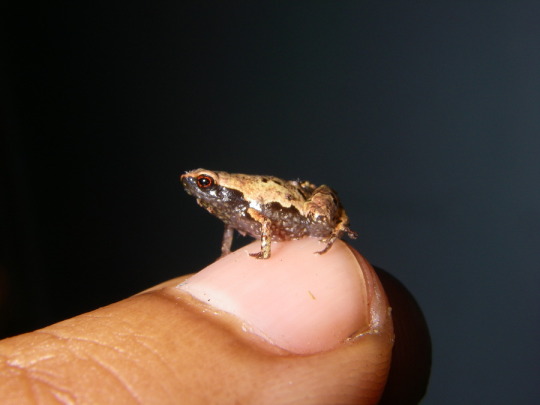
this is mini mum of the mini genus (also contains mini ature and mini scule), very tiny and what a great name
(photo © 2019 Mark D. Scherz and Andolalao Rakotoarison)
15 notes
·
View notes
Text
i feel like having mark scherz comment on your frog post is one of the top tumblr celebrity interactions
5 notes
·
View notes
Text

¡LAS BALLENAS TIENEN MANOS!
Un grupo de científicos diseccionaron una ballena varada en Dinamarca y expusieron su extremidad pentadáctil, la cual contiene "dedos" ocultos en las aletas.
Estos "dedos" indican que las ballenas provienen de los artiodáctilos terrestres. Sus ancestros caminaban en tierra hace 50 millones de años.
A través del tiempo, los dedos se fusionaron y se ocultaron, adaptándose a su entorno acuático. Esta evolución transformó las extremidades para la natación.
Estos "dedos" evidencian cómo los animales evolucionan y se adaptan. Además, demuestra conexiones sorprendentes entre distintas formas de vida.
A pesar de su adaptación acuática, las ballenas conservan huellas de su origen terrestre en sus aletas, un testimonio biológico impactante.
Fotografía de Mark D. Scherz.
2 notes
·
View notes
Text
Was anyone gonna tell me Mark Scherz works 2 minutes from my current lecture halls and that I probably walk past his office several times a week?????
#of all the places in the world#he's in denmark#at the danish museum of natural history#which is on Nørre Campus and directly connected to my university AND my faculty
2 notes
·
View notes
Note
Is there any frog species you have a grudge against?
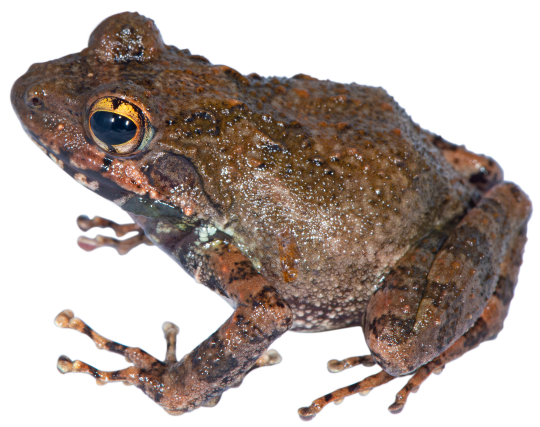
Meet Gephyromantis (Phylacomantis) pseudoasper
Peak calling activity? Between 3 and 4 am 😡
Its preferred perch? The canvas of my tent 🙃
The decibels of its call? Jet-engine levels 🫨
The sound? Fuckin' Star Wars lasers.
#fuck this frog in particular#frog#bioacoustics#frog recording#sounds#amphibian#Madagascar#wildlife#animals#nature#herpetology#Gephyromantis#Gephyromantis pseudoasper#Phylacomantis#answers by Mark#anon#anonymous#I love them really#very round#but oh my god#so loud#literally impossible to sleep through#I had some really restless nights in this forest#also they only call every few minutes#so you have these lulls#followed by INCREDIBLY LOUD BURSTS OF SOUND
4K notes
·
View notes
Text
All my homies love Mark Scherz🗣️🗣️🔥🔥🔥🔥🔥🔥
DNI IF UR A MARK SCHERZ HATERRR!!
1 note
·
View note
Text
I think mark scherz should be the new neil gaiman and not just bc im danish
1 note
·
View note